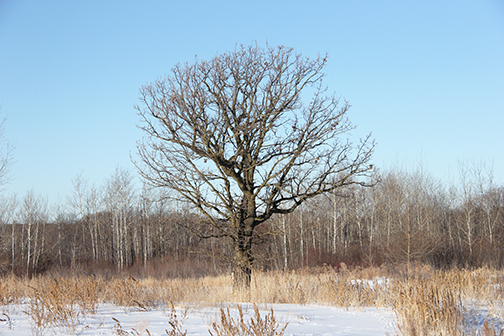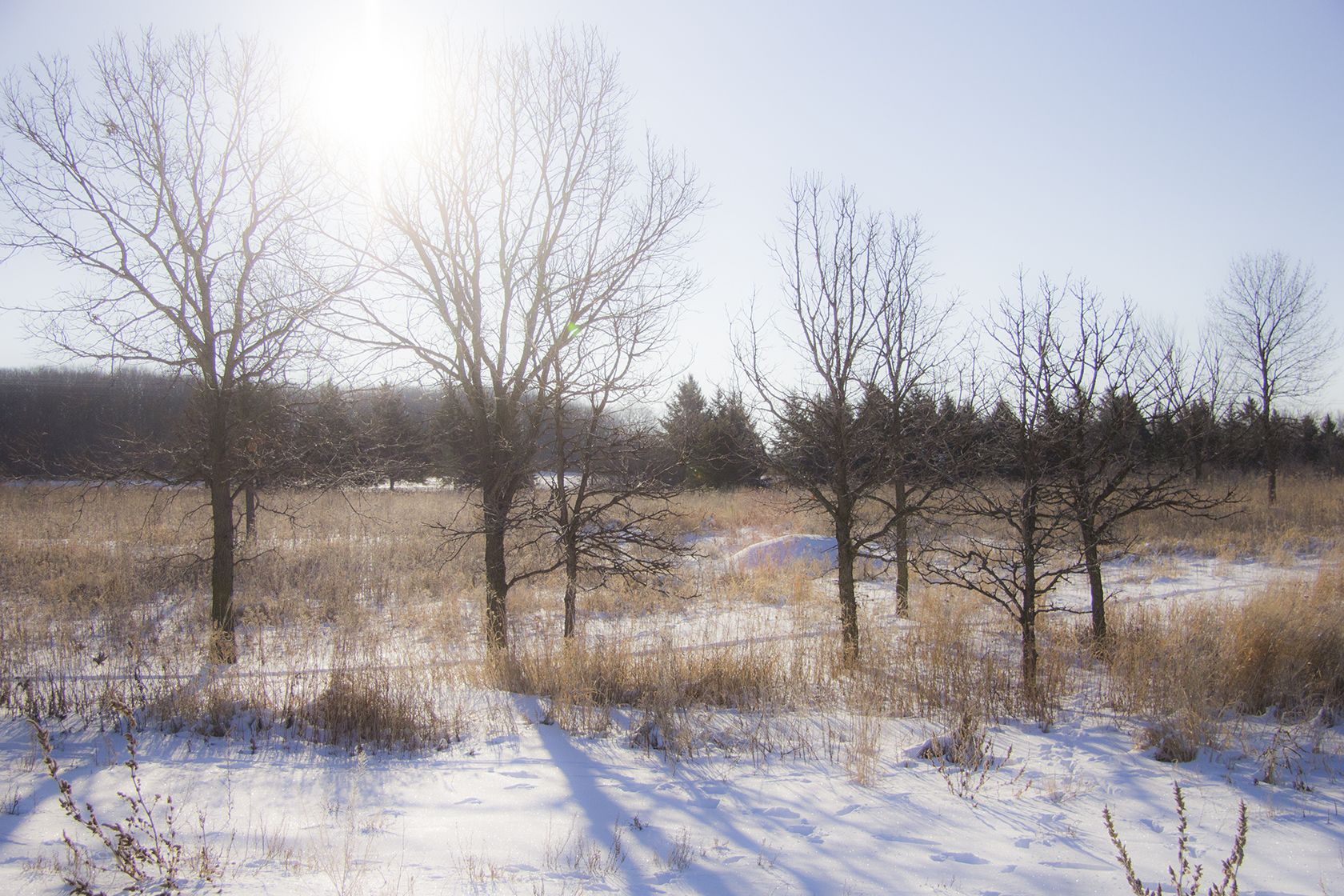Much of the photography in this blog is taken on our 80-acre farm here on the edge of St. Joseph, in Central Minnesota. More than half of our land was too low or too wet to come under till, which means it has some remnant native plants. One of them is the Bur Oak. Indeed, the landscape of this part of Minnesota was once defined by the Bur Oak, as well as a whole system of native grasses and wildflowers. This ecosystem, or biome, we call the Oak Savanna.
As I said in a previous post, the Bur Oak is a slow-growing tree, with a life expectancy of 200 years. Some have been measured to live 400 years, making them the longest living plants in our area.
This Bur Oak was about my height when we built our house in 1987. That makes it at least 35 years old.
One aspect of the Oak Savanna is that the trees in it are spread out, allowing sunlight to penetrate the woodland floor. Such sunlight allows for a good many of prairie, or full-sun, plants to inhabit the a savanna. And of course the oaks will have a good many partial sun/partial shade (but not dense shade) native wildflowers under them. In many ways, a good savanna looks like a prairie with Bur Oaks in it.
Because these trees grow slowly, their wood is more dense. So, square foot for square foot, these trees have stronger, heavier wood, which is why people like them for making things and for burning. The reason one sees "Oak Fire Wood" for sale is because an Oak log will put out more heat, and burn longer, than other lighter woods like Pine or Poplar.
This Bur Oak is easily three feet in diameter, making it a two hundred year old tree. It has grown in a lower, wetter part of our land.
I'm guessing that there were many more oaks on our property at one time, but they were cleared to create tillable land and were used for construction.
This cluster of Bur Oaks is unusual on our property. I assume a squirrel collected and stored acorns from the nearby Oak in the previous photo. Together they make up a nice little savanna in our wetlands. Because their acorns may have all come from the same tree, they are all of the same family, and therefore sharing similarities in structure, which I look for when I walk by them.



